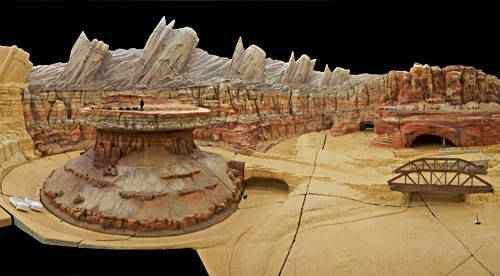 Recently I blogged about a new series of DVD's we've discovered by Disney covering basics in science, mostly physics. I'd seen some of these movies listed on the Disney Movie Club website but never felt like I could find enough information about them to feel secure in purchasing them. They have a hefty price tag ($30 for a 30 minute program). I decided to start writing more thorough reviews for anyone interested in buying the DVD's or at least knowing which one's they might like to acquire through inter-library loan. Our most recent view is Designs & Models. The host for all the titles is an Imagineer named Asa.
Recently I blogged about a new series of DVD's we've discovered by Disney covering basics in science, mostly physics. I'd seen some of these movies listed on the Disney Movie Club website but never felt like I could find enough information about them to feel secure in purchasing them. They have a hefty price tag ($30 for a 30 minute program). I decided to start writing more thorough reviews for anyone interested in buying the DVD's or at least knowing which one's they might like to acquire through inter-library loan. Our most recent view is Designs & Models. The host for all the titles is an Imagineer named Asa.Asa's Invention: For the first time Asa is not working on his own quirky invention. Instead he uses the example of tutu-clad monkeys invading your living room to explain the process of the Engineering Design Process.
- Identify a need or problem (you have to get the monkeys out of the house)
- Define design requirement & constraints (you don't have any bananas)
- Brainstorm Solutions (there are no bad ideas--even the dressing up in yellow and wearing banana scented perfume)
- Decide on an approach
- Build models (it is much easier to change the design on a small scale first)
- Build the final project
Defined Terms: Design, Requirement, Constraint, Scale, Model, Iterative (there is usually a cartoon accompanying the definition to aid in understanding)
Disney Rides or Attractions that exemplify the Theme:
The first is Expedition Everest and it receives the most extensive coverage. Imagineers determine the need-a thrill ride at Disney's animal kingdom. Brainstorming ideas include a mythical creature theme, but since it will be placed in the Asia section of the park they settle on the Yeti. Imagineers travel to Nepal to pick up theming ideas and concept drawings are created. A model of the mountain is sculpted in progressively larger scales with modifications made. A Cad-Cam system shows how the track and support structure needs to be place and the stages of construction (at one point it was discovered that a support beam would have shot right through a section of track). Artistic considerations like lighting and sound design are explained.

Second comes Toy Story Mania. The original model was actually two folding chairs and a paper towel tube! They knew what they wanted to do but required a lot of play-testing and redesigning to determine the best kind of shooters for the interactive ride. The key to this segment was showing that problem solving is a process and requires perseverence.

Finally we saw a brief glimpe of latest attraction being built in California--Cars Land, based on the Pixar movie. More high tech wizardry: a machine that build models by adding layer upon layer from a computer representation and a visor that let's you view and walk through a virtual world. The imagineers discovered that the mountain range of the Cars ride needed to be higher to block the view of electric power lines from the riders.

The Quiz: 15 questions
Try It Yourself: Using soda straws and tape, Asa builds a bridge from which is hanging a paper cup. He begins filling the cup with pennies but it soon collapses--our model didn't work, time for a redesign. Then he walks you through the process of buidling a suspension bridge. This design holds a lot more pennies. I would have prefered it if we were given the opportunity to brainstorm our own design rather than be handed the answer. I suppose we can always improve on the improvement.

No comments:
Post a Comment